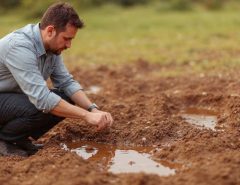Returning from the summer vacations, we still want to savor fresh salads, perhaps using the vegetables from our garden. In this article, we will talk about how to grow arugula at home, a product with a slightly spicy and spicy taste, and very easy to produce even on the balcony. The arugula is rich in vitamin C and contains mineral salts. It can be combined with different foods to give a touch of liveliness to our recipes.
How to grow arugula at home
Let’s move on to cultivation. See together how to make tasty arugula at home:
- Pot size: At least 30 cm deep.
- Soil: Very light and draining.
- Exposure: It grows optimally both in full sun and with a slight shade.
- Temperature: Between 15 and 20 ° C.
- Sowing: Sow the seeds of straw, or in a row, we try not to “drown” the growing plants too much, in the case we disperse the too close ones.
- Watering: In a pot, the arugula should be watered often, but with a little water, to avoid rotting the growing leaves. We use the primary method.
- Natural fertilizers: The soil to cultivate arugula loves the presence of organic substances, such as earthworm humus.
- Harvest: Cut the leaflets with at least 10 cm of height, being careful not to ruin the seedling which will still produce arugula. We cut the flyers near the collar.
You may like also: Types of jasmine
Planting arugula

The arugula needs the sun exposure to grow so you must place your plants in a sunny place although you have to keep in mind that too much sun produces a bitter taste in its leaves. Therefore, it is best to plant in the spring.
As for the climate, the ideal is to grow arugula in areas with warm climates but mild temperatures, typical of the Mediterranean. It tolerates a cold of up to -10 degrees Celsius, although if the thermometer goes down more, the plant will not develop.
The arugula adapts to all types of soils although it prefers those that are calcareous, permeable, rich in organic matter and well drained.
The sowing should be done from March to October planting the seeds at a distance of between 15 and 30 cm. The germination will occur between 10 and 14 days as long as the soil is moist and fertilized.
Irrigation
It is recommended to perform regular irrigation to preserve the humidity typical of the spring and the Mediterranean autumn.
If the plants are cultivated at a short distance between the arugula, they can suffer the attack of rust and powdery mildew, two diseases caused by different types of fungi. They are also prone to having aphids. If they are not grown close to other plants of the same family, they are resistant to the diseases caused by fungi or parasites typical of the Cruciferae.
Pruning
For best results, it is recommended to weed and remove the soil to aerate them. In addition, weeds must be eliminated.
The part that is harvested is the leaf and must be harvested before the flower stem develops because then they have better flavor. The harvest date is mid-summer when it is grown in spring or mid-November if it is grown in early fall.
How to do it? The process involves cutting the leaves at ground level and it is possible to make between 5 and 7 cuts per year.
Essential care
To have beautiful arugula plants, you can pay attention to the following tips:
- Avoid growing arugula with radishes, cabbages or turnips or other plants of the same family. Look at the compatibility table.
- Try to grow arugula with eggplant, tomatoes, and peppers.
- If you want, you can add the flowers in salads.
- When plants produce flowers, the leaves have a more bitter taste.
The arugula is the star of the moment and it can not be missing from your cultivation table. Even less when we talk about a plant without great demands. Ready to start working the land?
Tags: arugula, How to grow




Leave a Reply
You must be logged in to post a comment.